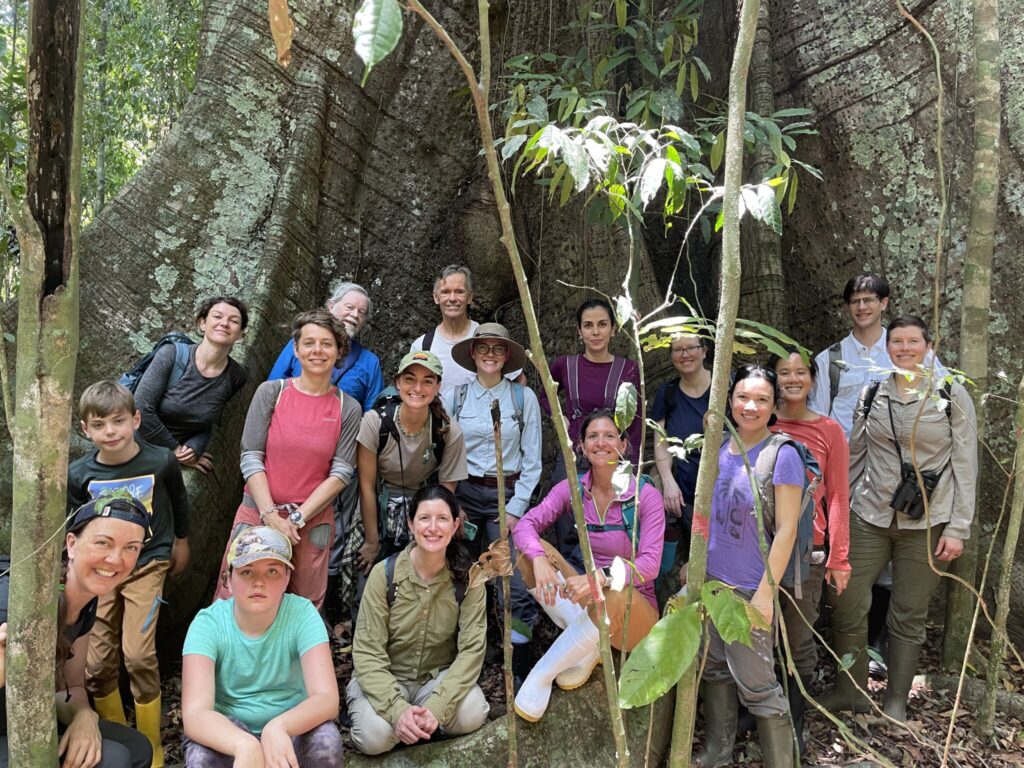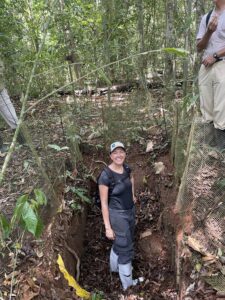
International research led by CSU suggests that studying root function in tropical forests could help vegetation models improve predictions of climate change.
When it comes to understanding climate change, vegetation models are vital tools that help scientists study plants’ adaptation strategies to changing environmental conditions, including drying, warming and elevated carbon dioxide levels. However, these models have historically omitted one of the largest biomasses on earth: tropical forests.
An international group of scientists – called TropiRoot – led by Colorado State University Associate Professor Daniela Cusack has been working to provide much needed representation of tropical forests and root function in vegetation models. After studying root functions by synthesizing literature on the subject and measuring roots in tropical ecosystems in Costa Rica, Panama, Puerto Rico and Singapore, Cusack and her team have contributed to the greater understanding of how carbon storage and belowground dynamics will respond to global change. Their study was published on Feb. 28 in New Phytologist.
According to the study, tropical forests contain 30% of global soil carbon, most of which likely originates from root biomass, representing the second highest soil carbon storage rate after permafrost. By acting as carbon banks, tropical forests can help to prevent severe effects of climate change, but these banks are at risk as tropical forests experience warming, shifting rainfall patterns, deforestation and relative depletion of soil nutrients due to elevated levels of carbon dioxide in the atmosphere.

“We are worried about how tropical carbon storage and carbon banks on land will respond to climate change, and to understand overall changes in carbon storage, we have to first understand how tropical roots will respond,” explained Cusack, associate professor in the Department of Ecosystem Science and Sustainability, research associate at the Smithsonian Tropical Research Institute and a research scientist in the Natural Resource Ecology Laboratory.
Compared to temperate forests, tropical forests have greater biodiversity, faster-acting processes and seasons based on rainfall rather than temperature. Over 50% of tropical forests are on old and strongly weathered soils, meaning their soils lack essential nutrients like phosphorus, so root systems have been forced to develop more efficient processes for recycling minerals. Additionally, tropical root systems have recently been described as growing differently from roots in other ecosystems, with unique combinations of physical traits and symbiosis with fungi and bacteria.
These unique features, combined with a lack of funding to support tropical forest research, have historically made tropical forests difficult to study and underrepresented in vegetation and global land-climate models. Better understanding how these aspects are responding to global change could give insights into the future of land-climate feedbacks.
“Our past work has shown that roots are the main way that carbon gets into the soil in tropical forests, so looking at how these roots function differently than roots in other ecosystems will help us understand how carbon gets transferred into long-term soil banks, which then helps us predict how these forests will respond to and affect climate change,” explained Cusack.
TropiRoot’s roots
Formed in 2020, TropiRoot’s funding initially supported 15 to 20 researchers. When COVID-19 prevented the researchers from traveling and researching tropical roots in person, they decided to open their group to include more ecologists from all over the world.
Over the span of four years, the group met monthly on Zoom, developing their research in addition to creating a close-knit community that now comprises over 100 scientists, the majority of whom are women.
In April 2023, they were finally able to come together for an in-person workshop in Panama, thanks to funding provided by New Phytologist. Many other scientists around the world have participated remotely in the group, including 15 CSU undergraduates who worked on the project on campus.
The group’s recently published research agenda was the second big product to come out of their collaboration, following an in-depth review of tropical root functions. Cusack intends to continue studying tropical roots in Panama, and to keep working with collaborators around the world, including Brazil and Ghana.
Cusack credits the success of this study to the intentional inclusion of diverse perspectives. “What we have seen with this collaboration is that we can get so much more done and have a wealth of viewpoints when we cast a wider net across different career stages, countries, ethnicities, cultures, languages and genders,” said Cusack.